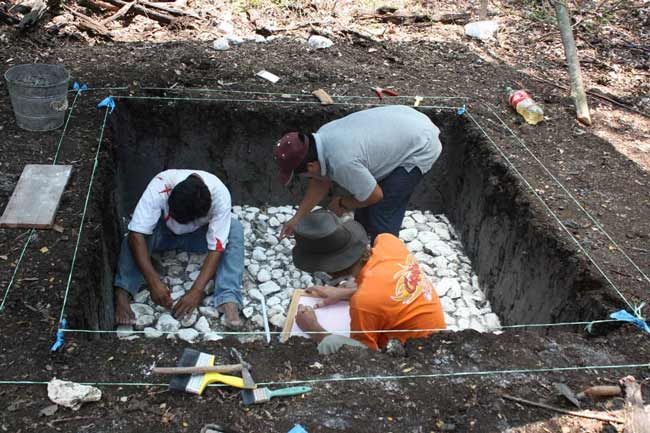
Ancient Mayan Reservoirs Discovered in City Ruins

Two artificial lakes, each capable of holding the water of 10 Olympic-size pools, were discovered in ancient Mayan ruins, archaeologists announced today.
An analysis of the so-called "aguadas" revealed the ancient Mayans lined these huge reservoirs of drinking water with ceramic shards, similar to outdoor pools today.
The lakes would have held enough water to support a population of 2,000 living in the Mayan city of Uxul during the three-month dry season, the researchers say.
"We found that the bottom, which is at a depth of 2 meters [6.6 feet], was covered with ceramic shards — probably from plates — practically without any gaps," said Nicolaus Seefeld, a member of the German-Mexican archaeological team that made the discovery.
Digging into Mayan culture
The researchers discovered the ceramic lining when they dug into the center of one of the two 1,076-square-foot (100-square-meter) reservoirs found in Uxul (meaning "at the end" in Mayan). But they don't yet know if such a lining existed for the entire reservoir.
Digging through Uxul's secrets has proven difficult for archaeologists. They could only reach the ruins by traveling almost 75 miles (120 kilometers) on jungle paths that cross the Calakmul Biosphere Reserve, the largest tropical forest reserve in Mexico.
Sign up for the Live Science daily newsletter now
Get the world’s most fascinating discoveries delivered straight to your inbox.
Still, the team has managed to uncover a sequence of layers almost 10 feet (3 m) deep. That covers several epochs of Mayan culture, according to study researcher Iken Paap, an archaeologist at Bonn University in Germany.
Life of the Mayans
The Mayan civilization stretched from a Pre-Classic Period (2000 B.C. - A.D. 250) to a Post-Classic Period (A.D. 900 – A.D. 1500). The newly uncovered layers cover a period of time between the late Pre- to the Post-Classic periods, Paap said.
Back in its heyday, Uxul sat in a densely populated area between the big Mayan cities of El Mirador to the south and Calakmul to the northeast. Its trade connections spanned present-day southern Guatemala and the Central Mexican Plateau.
Uxul eventually fell under the control of the rival city Calakmul, about 16 miles (26 km) away in A.D. 630. The team hopes to find out more about how that change in power affected the life of the Mayans in Uxul.
"This spring for the first time we found tombs that had not been destroyed by grave robbers in their search for ceramics and jade jewelry," said study researcher Nikolai Grube, an epigrapher at Bonn University. "We are hoping that this and new studies on the drinking water system and history of vegetation will provide us with new insights into the living situation of the population of this Mayan city."
The findings from the announcement have not yet been published.
Most Popular

